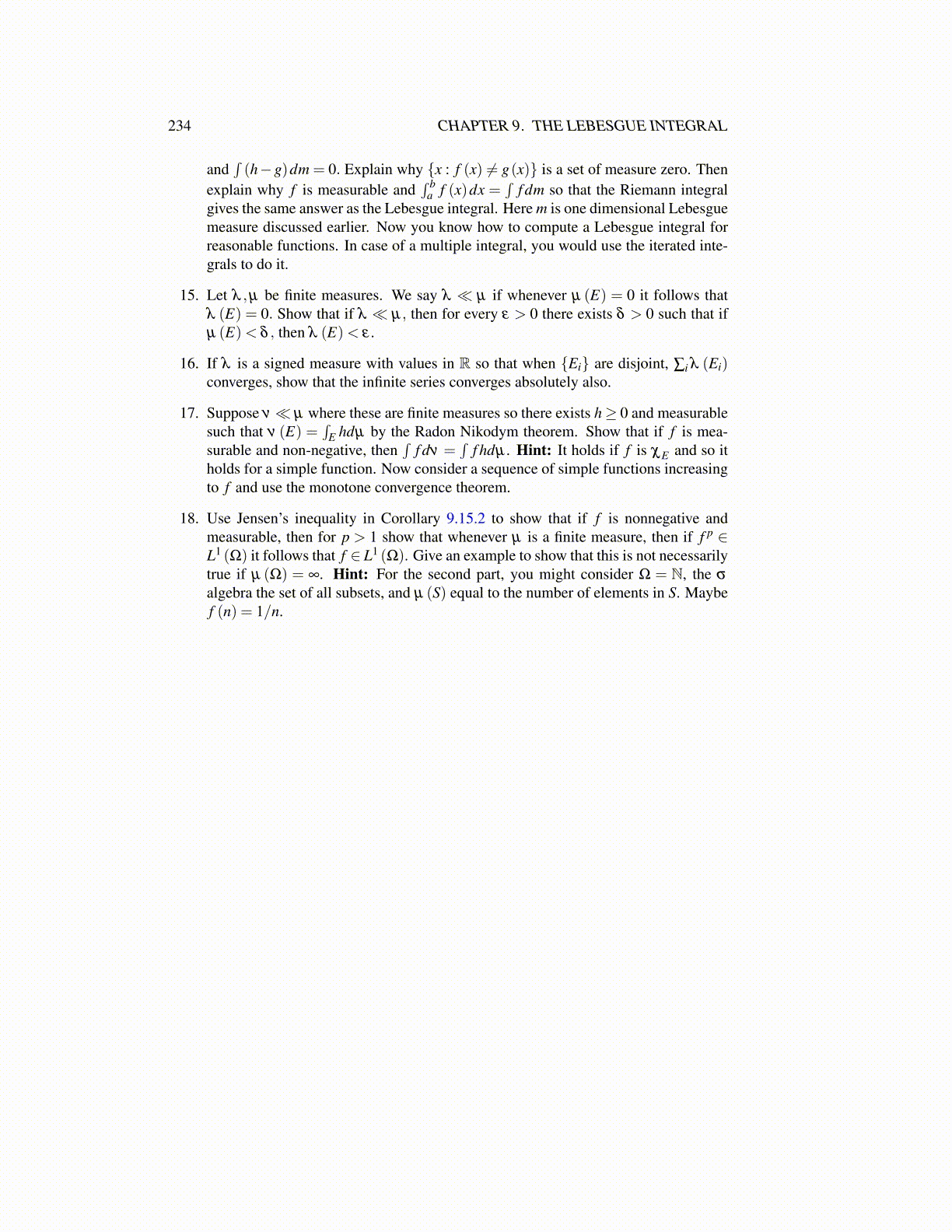
234 CHAPTER 9. THE LEBESGUE INTEGRAL
and∫(h−g)dm = 0. Explain why {x : f (x) ̸= g(x)} is a set of measure zero. Then
explain why f is measurable and∫ b
a f (x)dx =∫
f dm so that the Riemann integralgives the same answer as the Lebesgue integral. Here m is one dimensional Lebesguemeasure discussed earlier. Now you know how to compute a Lebesgue integral forreasonable functions. In case of a multiple integral, you would use the iterated inte-grals to do it.
15. Let λ ,µ be finite measures. We say λ ≪ µ if whenever µ (E) = 0 it follows thatλ (E) = 0. Show that if λ ≪ µ, then for every ε > 0 there exists δ > 0 such that ifµ (E)< δ , then λ (E)< ε .
16. If λ is a signed measure with values in R so that when {Ei} are disjoint, ∑i λ (Ei)converges, show that the infinite series converges absolutely also.
17. Suppose ν≪ µ where these are finite measures so there exists h≥ 0 and measurablesuch that ν (E) =
∫E hdµ by the Radon Nikodym theorem. Show that if f is mea-
surable and non-negative, then∫
f dν =∫
f hdµ . Hint: It holds if f is χE and so itholds for a simple function. Now consider a sequence of simple functions increasingto f and use the monotone convergence theorem.
18. Use Jensen’s inequality in Corollary 9.15.2 to show that if f is nonnegative andmeasurable, then for p > 1 show that whenever µ is a finite measure, then if f p ∈L1 (Ω) it follows that f ∈ L1 (Ω). Give an example to show that this is not necessarilytrue if µ (Ω) = ∞. Hint: For the second part, you might consider Ω = N, the σ
algebra the set of all subsets, and µ (S) equal to the number of elements in S. Maybef (n) = 1/n.